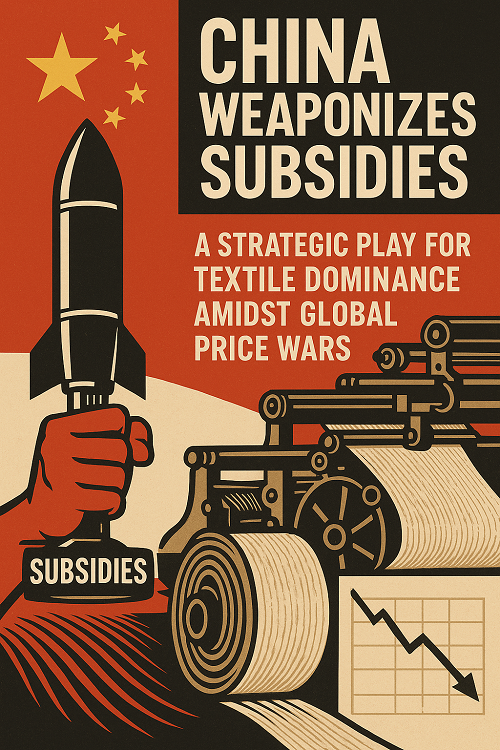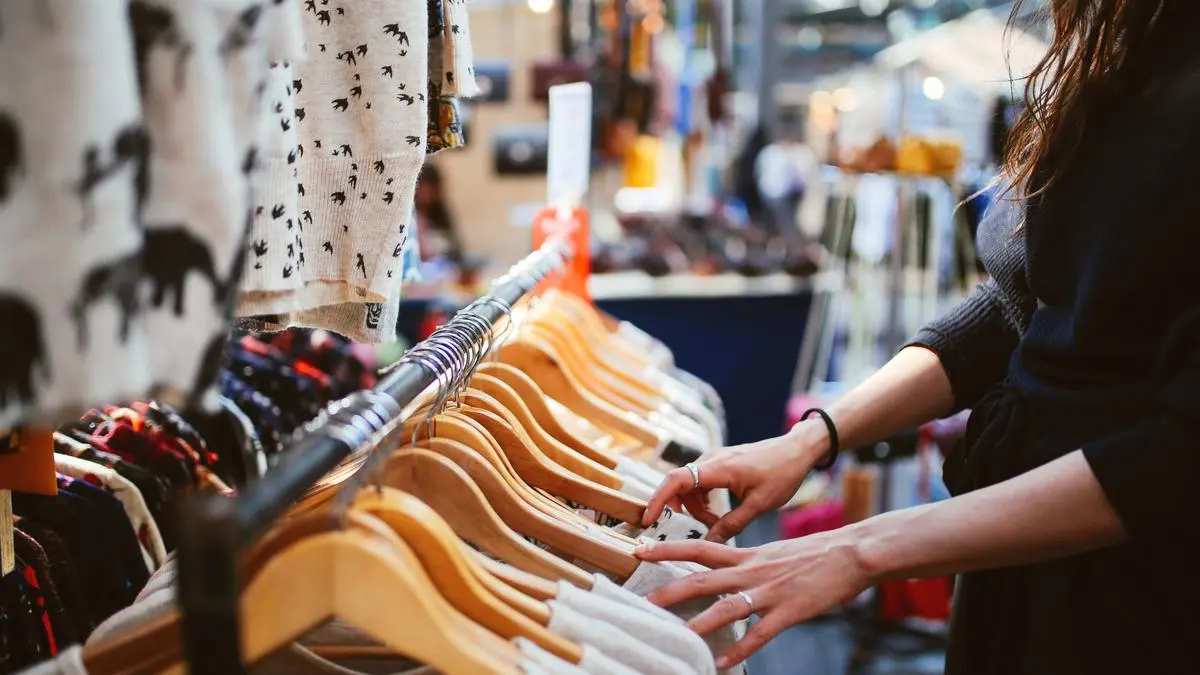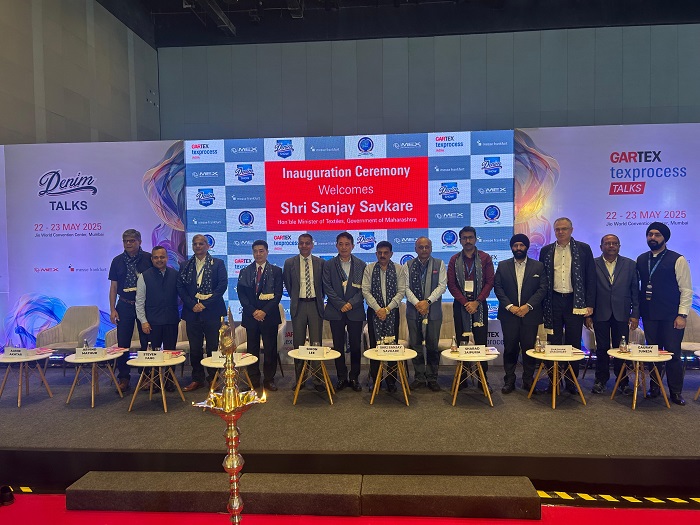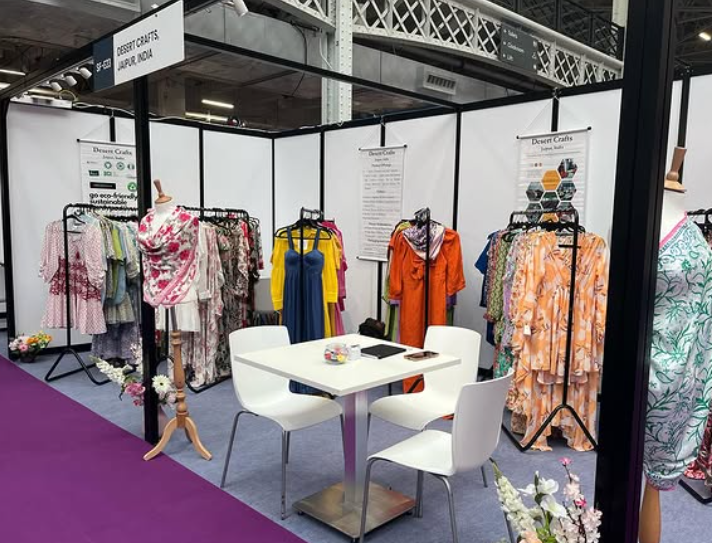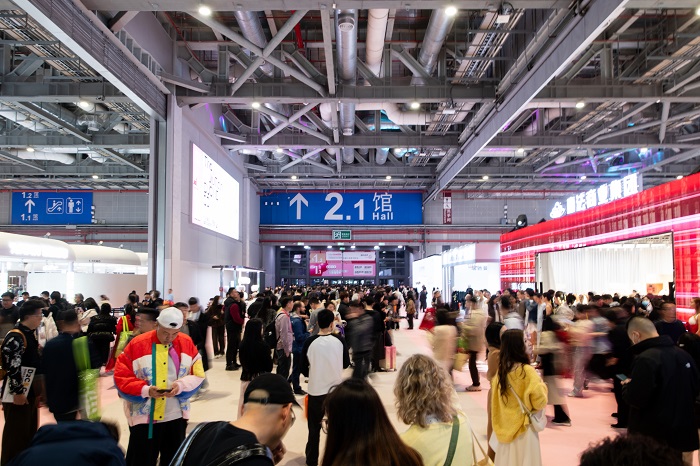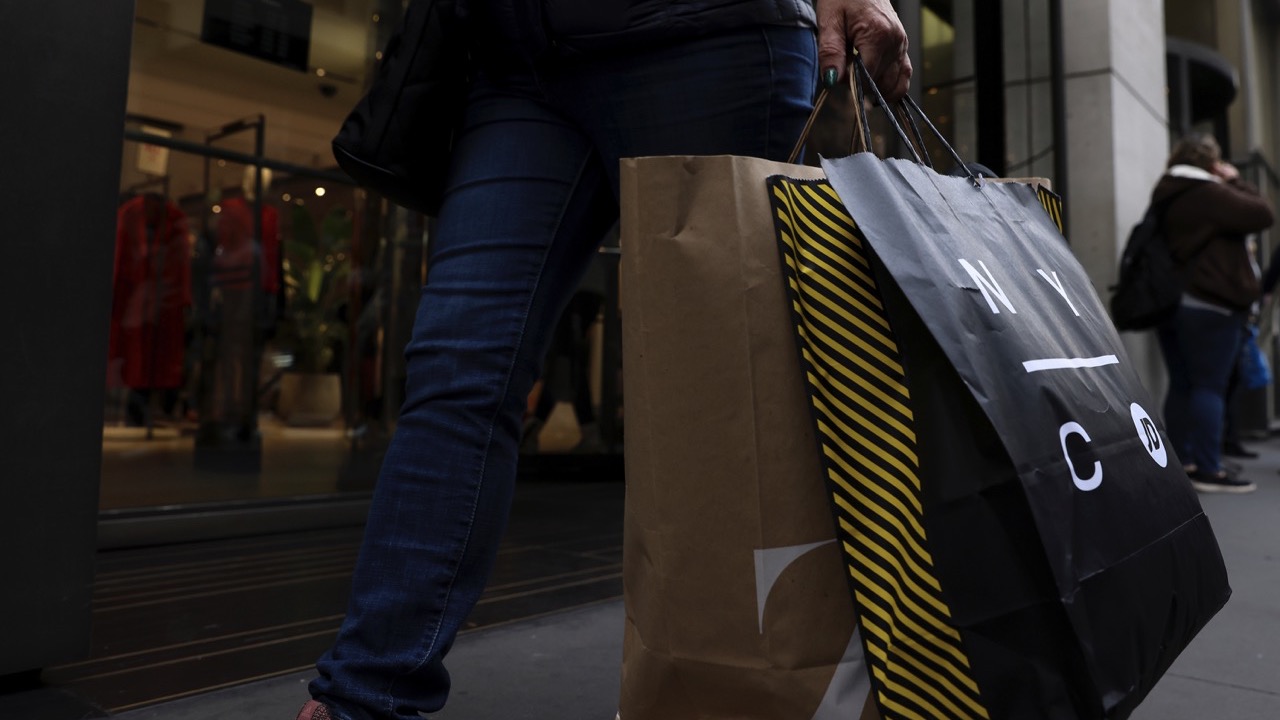Spring Fair, the cornerstone of UK retail, returns for its 74th edition this Sunday, promising an electrifying showcase of the latest trends and innovations in Home, Gift, Fashion, and Everyday essentials. With a staggering attendance of over 35,000 buyers from around the world, this iconic event transforms Birmingham's NEC into a bustling hub of commerce and creativity.
Drawing in titans of retail like Marks & Spencer, Selfridges, and Harrods, alongside an impressive array of global retailers, Spring Fair stands as the ultimate marketplace for industry players to connect, discover, and procure. This year's lineup boasts a diverse roster of over 1,200 suppliers, with 200 exclusive to Spring Fair, ensuring a unique and unparalleled shopping experience.
At the heart of the event lies an expansive array of products spanning 13 distinct sectors, from Home and Fashion to Kids and Everyday essentials. With a keen eye on the pulse of consumer trends, Spring Fair serves as a launchpad for thousands of innovative brands vying to capture the imagination of buyers and consumers alike.
Soraya Gadelrab, Event Director of Spring Fair, emphasizes the event's role in championing retail innovation and fostering meaningful connections within the industry. "Spring Fair isn't just an event; it's a celebration of retail's resilience and dynamism," she remarks.
The Home sector, a treasure trove of chic furnishings and decorative accents, showcases offerings from esteemed brands like Trampoline and Ivyline, alongside exclusive launches such as Kleine Wolke's bathroom textiles collection.
Meanwhile, the Everyday sector presents a dizzying array of essentials, from household goods to vaping products, with newcomers like Keplin Group injecting fresh energy into the mix.
In the realm of Gifts, brands like Joe Davies and Sass & Belle showcase a cornucopia of contemporary designs and personalized treasures, while the Greeting Cards sector brims with creativity from industry stalwarts like Ohh Deer and The Art File.
Not to be outdone, the Fashion destination Moda unveils the latest trends across Clothing & Footwear, Fashion Accessories, and Jewellery & Watches, featuring an eclectic mix of established labels and emerging designers.
Beyond the bustling marketplace, Spring Fair 2024 offers a rich tapestry of educational opportunities and networking events, with industry luminaries sharing insights on everything from strategic buying to social media marketing.
As Gadelrab aptly puts it, "Spring Fair is where the retail world converges to shape the future of commerce." With its unwavering commitment to innovation and collaboration, this year's edition promises to be a beacon of inspiration for retailers worldwide.
Italian leader in man-made fibers, Fulgar showcased its range of cutting-edge eco-friendly yarns at the recent Milano Unica trade fair. Aligned with the event's focus on promoting sustainability, Fulgar presented its impressive portfolio of green products, attracting significant interest from major fashion fabric manufacturers.
Fulgar's commitment to sustainability goes beyond a decade, with green programs focused on innovation and complete supply chain traceability. The extensive range of eco-sustainable yarns showcased by the brand includes Q-NOVA® regenerated yarn that is made from recycled nylon waste and offers high performance and sustainability; EVO® bio-based yarn derived from castor oil and offering a renewable and low-impact alternative; Amni Soul Eco, a bio-degradable nylon yarn that decomposes faster than traditional fibers, and Q-Cycle® yarn that is made from recycled pyrolysis oil from end-of-life tires, reducing reliance on fossil fuels.
These premium yarns cater to the high-quality standards of the fashion world without compromising on sustainability. Leading fashion fabric manufacturers are choosing Fulgar's solutions for their spring/summer 2025 collections, highlighting the demand for responsible and eco-friendly materials.
Daniela Antunes, Marketing Manager, Fulgar, says, the brand focuses on developing a responsible, traceable supply chain positions, and supports partner factories through its green products
The success of Fulgar's approach is evident in the collections presented by renowned players at Milano Unica. These include Alto Milanese, Borgini, Brugnoli, Iluna, Inwool, Lemar, Luxuy Jersey, Milior, Miti, Pontetorto, Sidonios, and Sitip.

Fashion's ever-evolving landscape stuns constantly, from intricate silhouettes and opulent palettes to trend-setting colors. In 2024, fashionistas worldwide eagerly await the unveiling of this year's mood board. But in a revolutionary twist, 2024 promises to elevate the fashion ecosystem through the fusion of a disruptive force: Generative AI.
For decades, the textile industry, the very essence of fashion, has stagnated, leaving millions yearning for unique textile creations. With the tech revolution permeating various industries, the textile world is poised to embark on an AI-driven transformation in 2024, delivering fashion enthusiasts with "Textile Design 2.0," as Francesca Kerrey, CEO of AI Style, aptly puts it.
Game-changing design generation
Textile design, an intricate tapestry of art, requires years of practice to master. With AI integration, the fashion industry stands to create designs that explode with creativity, innovation, and distinctness. "AI is not here to replace designers; it's here to empower them," Kerrey emphasizes. By working with AI, designers can analyze customer preferences and trend data, crafting designs that not only stun but sell. Furthermore, Generative AI promises a rapid churn out of new designs at minimal cost, paving the way for brands to launch and gather customer feedback before physical production, as Minh Hua, Chief Technology Officer of the World Fashion Council, highlights.
Boosts retail sales
Generative AI isn't limited to design; it revolutionizes sales channels too. Brands can identify potential buyers through AI-powered sales tools and utilize this data to create designs that resonate with these customers' palettes. Automated marketing campaigns then promote these designs to both repeat and potential customers, creating a smooth sales funnel. With this feedback loop, brands can deliver exactly what fashion enthusiasts crave, as Carlota De La Vega, Founder of the Institute for Computational Fashion, emphasizes.
Fostering experimentation
Fashion thrives on experimentation, especially in an era where uniqueness reigns supreme. However, creative blocks plague everyone, from designers and artists to writers and dancers. By tapping into the creative prowess of Generative AI, designers can access innovative designs that often escape human sensibilities. This freedom to experiment pushes the boundaries of fashion, offering consumers an unprecedented array of choices, as De La Vega points out.
Quality control
Quality reigns supreme in all industries, but in fashion, it speaks volumes about a brand's identity and creative ethos. Traditionally, skilled workers physically inspect fabrics for quality control. With AI's entry, the textile design space will not only transform design and sales but also automate and expedite quality control. From ensuring uniform yarn manufacturing to testing raw cotton's color, strength, and length, Generative AI will redefine quality control.
Future-ready fashion space
While fashion has empowered us to embrace our identities and step into our own skin, it's time to elevate the industry to its true potential. In 2024, AI integration will propel the fashion world to its toes, creating trends that stay, delivering a breath of fresh air and innovation to fashion connoisseurs. As Hua aptly concludes, "AI is going to democratize fashion by making it more accessible and personalized for everyone." Indeed, the future of fashion is here.
The interim Union Budget for 2024-25, unveiled today, retains existing tax rates while prioritizing ongoing projects and infrastructure development, aligning with the government's vision to achieve developed status by 2047. With a focus on inclusive growth and infrastructure, the budget sustains the momentum of previous years.
In response, S. K. Sundararaman, Chairman of The Southern India Mills’ Association (SIMA), voiced optimism, particularly with looming Lok Sabha elections. He expressed hope that the textile industry's demands regarding raw material issues and other concerns would find consideration in the forthcoming full-fledged budget.
Sundararaman welcomed the 27.60% increase in allocations for the Ministry of Textiles for 2024-25, compared to the previous year. Noteworthy allocations include funding for various schemes such as PM Mitra Park, NITTM, A-TUFS, ISDS, RoTDEP, and RoSCTL, along with provisions for the Cotton Corporation of India's MSP operations.
Moreover, he appreciated measures promoting green power, aiming to reduce carbon emissions, and applauded proactive initiatives towards sustainability goals. The budget's focus on strengthening logistics infrastructure to enhance manufacturing sector competitiveness was also commended.
However, Sundararaman highlighted unresolved industry concerns, including import duty on ELS cotton, technology missions for cotton production enhancement, and exemptions for imported man-made fibers. He expressed hope for their inclusion in the full-fledged budget, emphasizing their significance for farmers and industry growth.
As anticipation builds for the comprehensive budget, stakeholders await further clarity on policy directions and support measures for sectoral development.
Under new leadership and ownership, The Lycra Company, is revamping its product range with a strong focus on sustainability.
By 2025, around 30 per cent of Lycra fibers will be bio-sourced, reducing CO2 emissions by half and aligning with clients' sustainability goals.
The company’s new fiber, Lycra Adaptiv offers better stretch and adaptability, potentially reducing the need for multiple sizes and minimizing waste. The fiber has already been adopted by Adidas for its All Me line.
Polyester Fiber, Lycra T400, enables recyclable stretch fabrics for jeans and sportswear while the new Fit400 fiber expands T400's use to recyclable sports apparel. These fibers will be rolled out gradually starting late 2024.
Last year, the company faced challenges due to inflation and pandemic disruptions, but expects a better outlook in 2024. It sees a growing interest in differentiation and sustainability narratives and aims to industrial-scale circularity.
Overall, The Lycra Company is making significant strides towards a more sustainable future by integrating eco-friendly innovations into its core product range. This strategic shift positions the company for growth while aligning with the evolving demands of the apparel industry and environmentally conscious consumers.
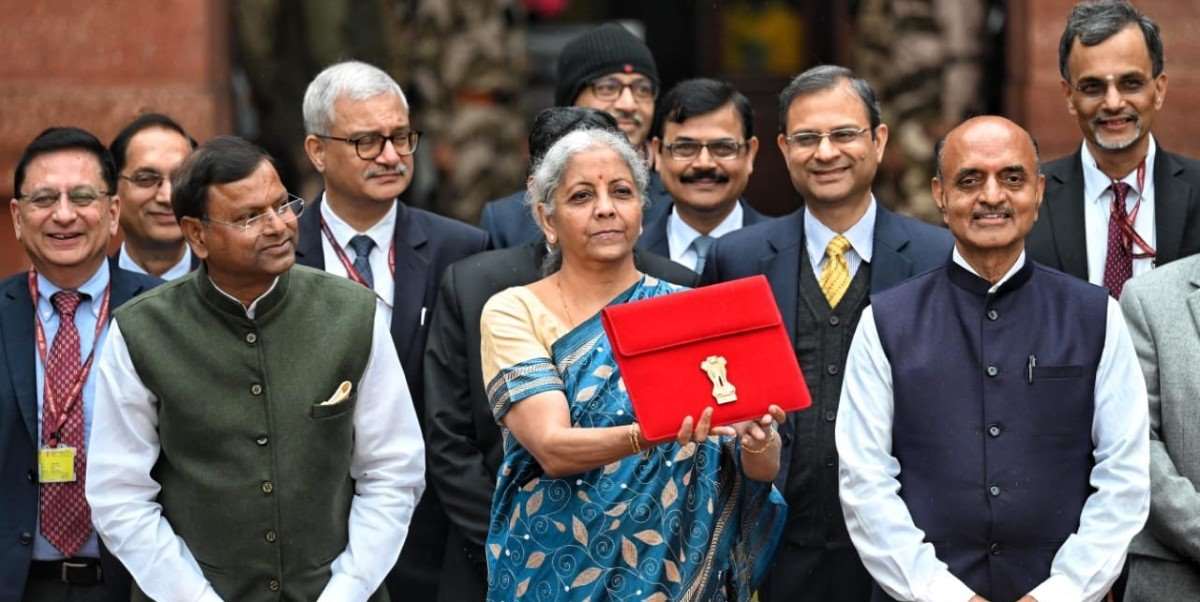
The South India Garment Association (SIGA) has raised alarm over the potential negative effect on the garment industry due to a new payment rule for Micro, Small, and Medium Enterprises (MSMEs). In a letter to Prime Minister Narendra Modi, SIGA urged for the repeal of Rule 43B(H) of Income Tax Act, claiming it poses an existential threat to countless garment units nationwide.
Introduced as part of the MSMEs Development Act, 2006, Rule 43B(H) mandates prompt payment to micro and small businesses by buyers. Payments exceeding specified timelines – 15 days for perishables, 30 days for goods, and 45 days for services – are now deemed income for the seller, attracting taxes on the buyer.
Affects on the industry
SIGA President Anurag Singhla expressed grave concerns, stating, "This will be a big blow to the garment industry, already struggling against corporate competition. Lakhs of jobs are at stake. We urge the Prime Minister to intervene and save the industry."
Industry experts too echoed their concerns. Naresh Lakhanpal, SIGA Vice President opines, "The garment industry faces its worst crisis in 50 years. Clients are cancelling orders due to the rule. It's unsustainable." While B C Shivakumar, Managing Director of BS Channabasappa & Sons, explained highlighted its impracticality in the garment industry's context. "The average payment cycle is 90 days. Enforcing a 45-day limit will cripple us. We request a phased implementation." Kundan Jain, former SIGA President, emphasized the ripple effect on suppliers facing order cancellations. "Making payments within 75-90 days is the norm. A 45-day limit is impossible," he asserted.
The garment industry is a significant contributor to the Indian economy, employing over 12 million people and accounting for 2 per cent of the GDP. Estimates suggest that over 50,000 garment units could be affected by the new rule, potentially jeopardizing millions of jobs across the value chain.
Meanwhile the government has acknowledged the SIGA’s and other industry bodies concerns. The Ministry of Micro, Small and Medium Enterprises (MSME) has stated it is reviewing the rule and considering possible modifications. However, no concrete action has been taken yet.
Potential consequences
Beyond job losses, the rule's implementation could have severe consequences on the garment industry:
• Lower production: As factories struggle to meet tight payment deadlines, production could slow down, impacting exports and domestic availability.
• Increased costs: Businesses may need to raise prices to compensate for the additional tax burden, potentially impacting consumer demand.
• Shifting orders: Garment manufacturers may be forced to move production to countries with more relaxed payment regulations, further impacting domestic jobs and exports.
Various stakeholders have proposed alternative solutions such as having industry-specific exemptions or exempting the garment industry from Rule 43B(H) or extending the payment timelines to align with industry norms. Financial support by way of providing working capital loan or other financial instruments to help businesses meet payment deadlines. Opting for phased implementation, which would mean implementing the rule gradually to allow businesses time to adjust their practices.
The future of the garment industry hangs in balance as it awaits the government's response. The potential consequences of the new payment rule are significant, and swift action is needed to protect jobs, ensure industry stability, and safeguard the sector's contribution to the Indian economy.
Bangladesh's exports of non-cotton garments, including man-made fibers, could double to $19 billion by 2025 from the current $8.5 billion, predicts a new study by the Economic Relations Division (ERD).
However, this potential hinges on overcoming several key challenges such as importing man-made fibers incurs duties of up to 59 per cent, compared to duty-free cotton. This discourages investment and increases costs.
Secondly, complex customs procedures and limited access to short-term financing hinder smooth operations and expansion. The industry also lacks skilled workers and modern technology, hindering efficiency and competitiveness. It even does a dedicated fiber security strategy and limited research and development activities further impede growth.
To unlock Bangladesh’s export potential, local entrepreneurs like Md Saleudh Zaman Khan Jitu have emphasised the need for duty-free imports of raw materials. Industry leaders like Mohammad Ali Khokon and Abdullahil Rakib have also called for policy support, including duty-free access and infrastructure development.
The recommendations of these leaders include implementing a fiber security strategy to ensure raw material availability, granting duty-free access to all man-made fiber raw materials, establishing a dedicated low-cost investment fund for the sector, investing in skill development and technology adoption initiatives, streamlining customs procedures and simplify duty drawback processes and increasing research and development activities to enhance competitiveness.
Bangladesh is phasing out export incentives to comply with World Trade Organisation (WTO) rules before its expected graduation from Least Developed Country (LDC) status in 2026.
This move has sparked divided opinions, with exporters fearing loss of competitiveness due to higher costs and foreign exchanges challenges. To support these exporters, experts are recommending reduction in business costs and tackling corruption.
The new policy reduces incentives for various sectors, including leather, agro products, and new markets. Exporters argue that losing incentives on crucial garment items like suits and shirts would prove detrimental to diversification and global competitiveness. Meanwhile, analysts argue that relying solely on cash incentives is unsustainable and masks underlying issues like high business costs and inefficient processes.
Overall, the phasing out of export incentives presents a complex scenario for Bangladesh. While it aligns with WTO rules and might enhance long-term economic efficiency, it raises concerns for the export sector, particularly the garment industry, in the short term. To manage this transition effectively, careful navigation and alternative support measures will be crucial.
US footwear giant Skechers kicked off 2024 with record-breaking sales of $8 billion in 2023, a 7.5 per cent Y-o-Y increase. The strong performance was fueled by a resurgent Asia-Pacific market and a thriving direct-to-consumer business.
The brand’s sales in the fourth quarter soared by 4.4 per cent, driven by a 6.9 per cent spike in international sales and a 0.3 per cent rise in domestic revenues.
Skechers’ direct-to-consumer sales surged by 20.3 per cent, while wholesale sales dipped by 8.3 per cent.
The brand’s sales in the Asia Pacific region grew by 15 per cent, with China leading the charge with double-digit gains. Its net earnings for the quarter reached $87.2 million, translating to diluted earnings per share of $0.56, up from $0.48 in the previous year.
David Weinberg, COO, says, the strong demand for the brand’s comfort technology products, particularly through its direct-to-consumer channels, is a testament to the brand's strength.
Many major fashion brands are not adequately addressing forced labor in their supply chains, with luxury giant LVMH among the worst offender, says a new report by KnowTheChain.
The report analyses 65 companies based on their exposure to forced labor risk and their efforts to mitigate it. The average score across all companies was found to be only 21 out of 100, indicating significant shortcomings in their policies and practices.
Lululemon emerged as the leader with a score of 63, praised for its strong human rights due diligence practices. It was followed by Puma and Adidas who demonstrated their commitment to fair labor standards.
Foot Locker and LVMH scored poorly, highlighting the need for significant improvement. Amazon and Walmart both scored 32/100, placing them in the top third-performing of companies overall.
Walmart said it works with suppliers, non-governmental organisations, experts and others to address root causes of these issues, foster innovative solutions and accelerate adoption at scale.
The report concludes, many companies lack transparency about their supply chains, especially when it comes to sourcing high-risk materials like cotton. Few of them provide effective remedies for workers whose rights have been violated with engagement with unions and worker representation remaining low across the industry.
The report calls for stricter laws for companies to disclose and mitigate supply chain risks. It urges companies to provide more detailed information about their sourcing practices and potential risks. They need to establish clear procedures for addressing and remedying human rights violations, the report says
Further, the report calls for an integration of sustainable purchasing practices into price negotiations and sourcing decisions. It also urges companies to engage with workers and unions to ensure their rights are protected.
- 1
- 2
- 3
- 4
- 5
- 6
- 7
- 8
- 9
- 10
China Weaponizes Subsidies: A strategic play for textile dominance amidst global…
Despite the narrative of a global apparel pivot away from China, the reality on the ground paints a different picture.... Read more
Shift in fashion's value proposition, can speed and sustainability coexist?
Expanding on the recent LinkedIn post by Lubomila Jordanova, CEO & Founder of Plan A and Co-Founder of Greentech Alliance,... Read more
Gartex Texprocess India 2025 kicks off in Mumbai with global focus
The 2025 Mumbai edition of Gartex Texprocess India opened its doors at the Jio World Convention Centre on May 22,... Read more
EU Horizon T-REX project data reveals challenges for textile-to-textile recyclin…
A new report from the EU Horizon T-REX (Textile Recycling Excellence) Project, while focused on piloting a data model to... Read more
Source Fashion to showcase global ethical sourcing solutions in July 2025 editio…
Source Fashion, the UK’s leading responsible sourcing show, is set to return from 8-10 July 2025 at The Grand Hall,... Read more
CHIC September 2025 to return in Shanghai with ‘Fashion Picnic’ theme
China’s leading fashion trade event, CHIC 2025 (September), will return to the National Exhibition and Convention Center in Shanghai from... Read more
US consumer confidence dips amidst economic uncertainty
In April 2025, the US consumer sentiment recorded a shift as confidence levels dipped, indicating potential headwinds for the economy.... Read more
Secondhand on the rise in Europe as it readies for a €26 bn fashion revolution b…
Across Europe, pre-owned garments are shedding their ‘used’ label and stepping into the spotlight as a mainstream force. A new... Read more
India-Bangladesh Trade in Turmoil: Retaliatory measures threaten regional commer…
The burgeoning trade relationship between India and Bangladesh has hit a turbulent patch, marked by a series of retaliatory trade... Read more
Peeling Back the Fabric: Glimpact study gives true ecological threads of apparel…
A groundbreaking new study by Glimpact, has pulled back the curtain on the often-obscured environmental footprint of the apparel industry,... Read more

